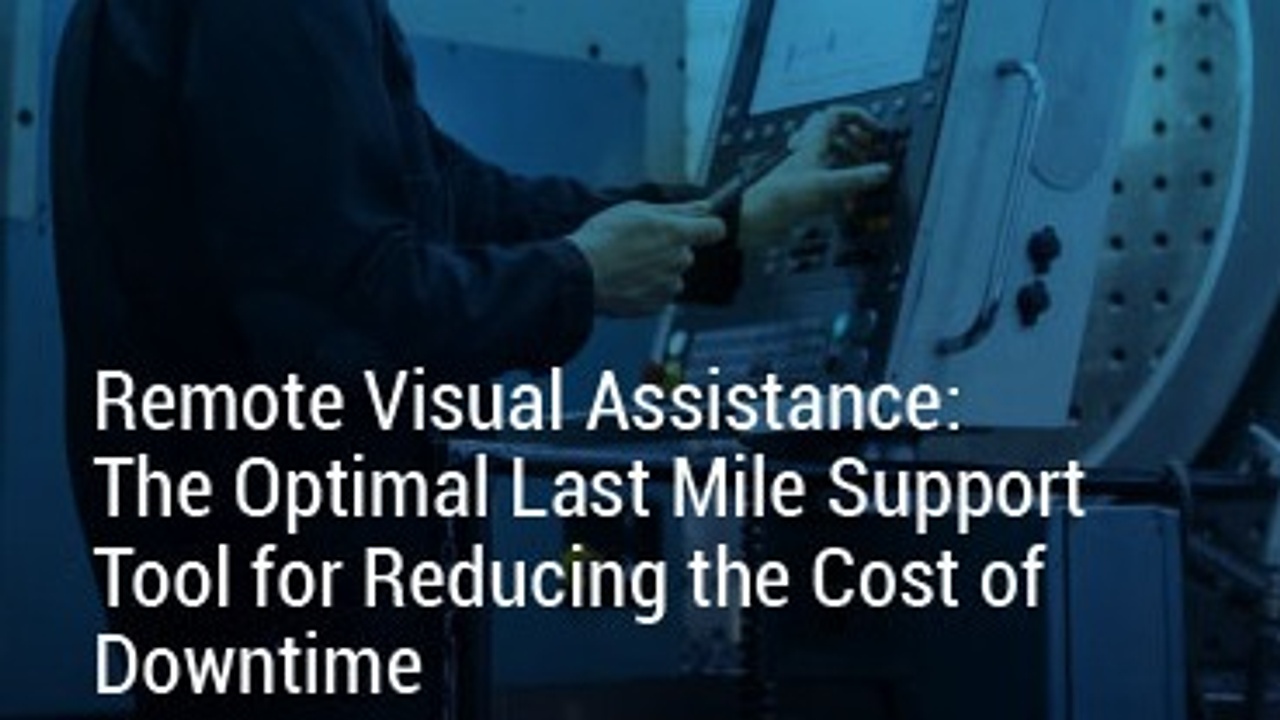
Summary on Remote Visual Assistance: The Optimal Last Mile Support Tool for Reducing the Cost of Downtime
Sep 15, 2022Managing service delivery while establishing the performance of metric targets, such as the cost of downtime, is an exceptional capability for OEMs and their customers. When downtime happens, hundreds of thousands and millions of dollars are measured per hour and incident. In this regard, it impacts finances big time.
Types of Downtime
Downtime has two categories: planned and unplanned. Planned downtime is typically scheduled for preventive maintenance, inspections, calibrations, and line changes. In contrast, unplanned downtime is caused by hardware failures, human error, repeat failures, etc. These incidents are unanticipated and may happen again if not resolved correctly.
Consequences of Downtime
Unplanned downtime can disrupt plant operations and impact customers. It can severely affect the financial cost, revenue, and business credibility. When outcome-based service models are used, customer satisfaction and revenue will suffer as this model demands service providers to uphold a high standard of efficiency and accessibility at all times.
Economics of Downtime
The cost of downtime depends on an asset’s value-in-use. It is best understood when it is not present. The impact of the downtime cost may differ from industry to industry. It is worth noting that downtime activities rarely last for an hour and may continuously occur for manufacturers for a year. In fact, the cost of unplanned downtime will sum up to $50 Billion per year.
Calculating Downtime Costs
Value-in-use is a notion that primarily addresses lost value revenue. However, even if lost money is a significant factor, downtime is not the only factor to be considered when assessing costs. Other costs include detection, containment, recovery, ex-post response, equipment, IT productivity, user productivity loss, third-party, and lost revenue.
Zero Unplanned Downtime
The emergence of the Zero Unplanned Downtime concept in recent years has become a top priority for most organizations. It carries out scheduled activities to foresee and avoid malfunctions. Proactive maintenance entails spending money on IoT-enabled tools and technology. But this process cannot replace the need for human intervention, which is why better solutions are in need.
RVA: The Key to Zero Downtime
Remote Visual Assistance (RVA) software is an effective solution for reactive and proactive service situations. With this, OEMs can support a field technician on-site, which helps narrow the knowledge gap between distant specialists and fresh hires. RVA will make a time reduction in the completion of a particular task by the field technician. In addition, it gives a fast and more effective solution to unplanned situations.
A Must Have Technology
When unplanned downtime occurs, RVA is a great tool to use. Its location makes it an optimal last mile support tool to achieve Zero Unplanned Downtime. Additionally, this technology benefits companies that are just starting to implement preventative maintenance or are currently working in a reactive mode. For these reasons, RVA is the perfect service strategy to use.
Stay connected with news and updates!
Join our mailing list to receive the latest news and updates from our team.
Don't worry, your information will not be shared.

